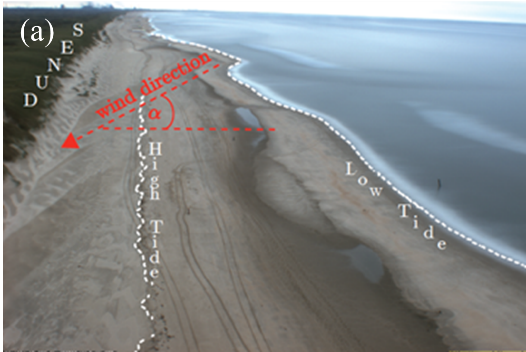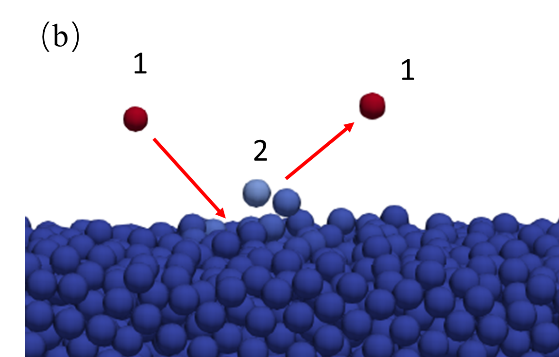X. Wang*, G.H.P. Campmans, K.M. Wijnberg, T. Weinhart, A.R. Thornton, S. Luding
University of Twente
*corresponding author:
Introduction
In coastal areas, aeolian sand transport has significant spatio-temporal variability, as a result of varying beach surface properties. Surface moisture is one of the most important factors limiting the sand supply (Figure 1 (a)). To understand the intrinsic variability of sand transport over short spatial and temporal scales, it is necessary to study the effect of moisture on the grain-scale dynamic behaviours. Moisture between the sand grains can influence the sand transport by increasing the threshold velocity for transport and reducing the transport rate remarkably (Neuman and Scott, 1998), hence change the bed form patterns. This study aims to investigate the effect of surface moisture on the sand transport mechanism on the grain scale and then upscale the description to the transport variability on an engineering scale.
Methods
On the grain scale, an explicit coupling between discrete element modelling (DEM) and RANS description will be adopted to simulate the sand particle movement under the influence of wind flow. Two important processes in aeolian transport will be studied, the aerodynamic entrainment and the impact mechanics in the saltation transport mode (Figure 1 (b)). The open-source package MercuryDPM will be used and this includes a liquid bridge model that can simulate the fluid between the particles. From the grain-scale simulations, an initiation function and a splash function incorporating the moisture effect will be derived and applied in the meso-scale modelling. The functions, which are capable to describe the particle initiation and the impact process in the near-bed layer, can reduce the computational cost drastically, as only the saltating particles (no bed particles) need to be modelled. The meso-scale modelling will be implemented by direct particle modelling coupled with a RANS fluid model in order to capture the influence of moisture content on the transport characteristics in a larger scale. Then an erosion function will be developed based on the relation of erodibility and the bed moisture content measured from meso-scale simulations, making it possible to upscale to an engineering-scale continuum model.


Figure 1: Different scales of sand transport: (a) Beach-dune system (Duarte-Campos et al., 2018); (b) Impact process in MercuryDPM simulation (Blue particles have zero velocity and red ones have high velocities; 1- impact particle, 2 – ejected particles).
References
Cheryl McKenna Neuman and Marianne Maljaars Scott. A wind tunnel study of the influence of pore water on aeolian sediment transport. Journal of Arid Environments, 39(3):403–419, 1998. 1.1. https://doi.org/10.1006/jare.1997.0371
Leonardo Duarte-Campos, Kathelijne M Wijnberg, and Suzanne JMH Hulscher. Estimating annual onshore aeolian sand supply from the intertidal beach using an aggregated-scale transport formula. Journal of marine science and engineering, 6(4):127, 2018. 2.3.2. https://doi.org/10.3390/jmse6040127
I. Surname1*, F.N. Another-Surname2 , Y. Next-Surname2
1 University Name, Country; 2 Organization Name, Country
* Corresponding author: mail.name@organization.org


